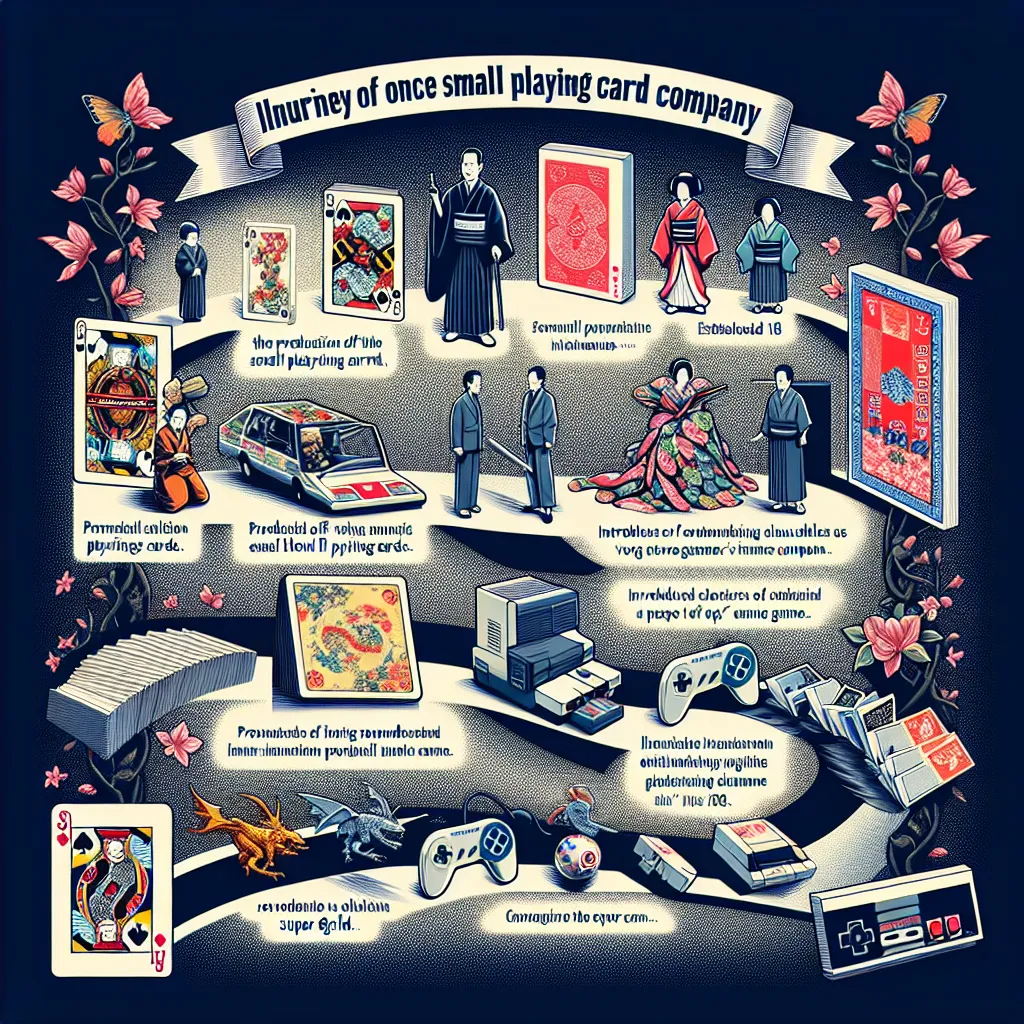On July 6, 2016, the world was buzzing with excitement over a mobile game that broke all records on the App Store. Pokémon Go became a massive hit, showing just how a viral sensation can transform a company’s image overnight. The company in the spotlight was Nintendo. Today, we’ll take a look back at Nintendo’s rich history.
Nintendo’s story begins in Japan in the late 19th century. Japan was undergoing major changes during the Meiji Restoration, a period when Emperor Meiji overhauled the country’s isolationist policies, embracing modernization and Western influences. One of the minor but impactful changes was the legalization of Hanafuda cards. These cards, unlike Western playing cards, didn’t have numbers, making them unsuitable for gambling but perfect for games.
Fusajiro Yamauchi founded Nintendo in 1889, starting as a Hanafuda card maker. His business struggled initially but found success once the Yakuza adopted Hanafuda cards for gambling. By the early 20th century, Nintendo became a leading card manufacturer in Kyoto and later expanded into Western-style playing cards.
After Fusajiro retired, his son-in-law Sekiryo took over, modernizing the business and expanding its reach. In 1949, a young Hiroshi Yamauchi inherited the company and began a transformative journey. Hiroshi secured a deal with Disney in 1959, allowing Nintendo to print Disney characters on its cards, making them immensely popular with children.
Through the following years, Nintendo ventured into various enterprises—taxi services, love hotels, even instant rice. Most of these ventures failed, but Nintendo found its footing in the toy market with the release of the Ultra Hand in 1966. This success led to the creation of many other toys and laid the groundwork for Nintendo’s future in electronic games.
Nintendo’s journey into the gaming world escalated in the ’70s and ’80s. The Color TV-Game series and the handheld Game & Watch consoles became big hits. But it was the release of Donkey Kong in 1981 that solidified Nintendo’s reputation. The game introduced Jumpman, later known as Mario, one of gaming’s most iconic characters.
The 1980s saw more landmark releases like the Nintendo Entertainment System (NES) and games such as Super Mario Brothers and The Legend of Zelda. The company continued to innovate with the Game Boy in 1989, a handheld console that became an instant sensation.
However, not all ventures were successful. The Virtual Boy, a virtual reality console, flopped in 1995. Despite this, the release of Pokémon in 1996 marked another high point for Nintendo. Pokémon, initially released as Red and Green versions, has evolved into a global phenomenon.
By the new millennium, Nintendo faced stiff competition from Sony and Microsoft but found success with the Nintendo DS in 2004 and the Wii in 2006. These consoles appealed to a broad audience, securing Nintendo’s place in gaming history.
Into the 2010s, Nintendo encountered ups and downs. The Nintendo 3DS performed well, but the Wii U lagged behind its competitors. Yet, Pokémon Go’s 2016 release gave Nintendo a remarkable boost, highlighting the brand’s enduring power and appeal.
Nintendo’s story is one of innovation, resilience, and transformation. From humble beginnings as a card game company to a giant in the gaming industry, Nintendo has continually adapted and thrived, capturing the hearts of millions worldwide.






